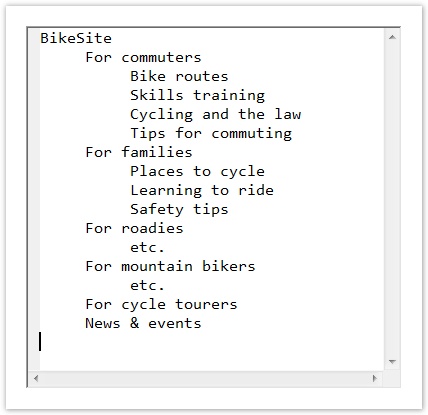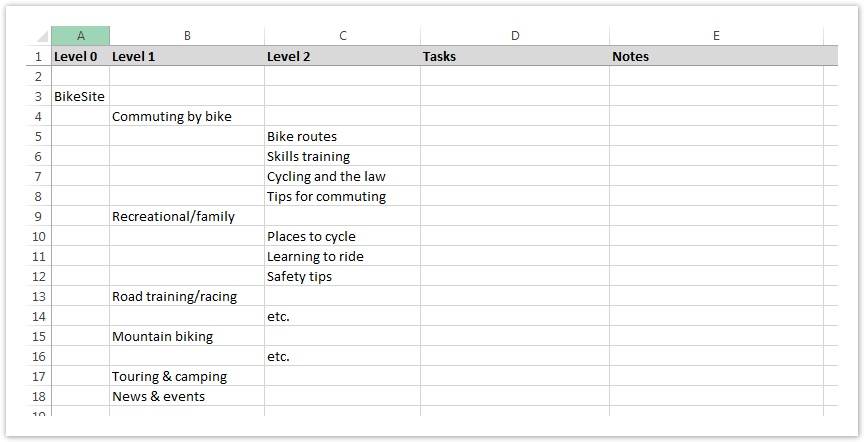First, you need your tree in a form where you can easily work with it – typically, a simple text-document format on a computer. If you’re working with an online tree-testing tool, this will also let you easily copy your finalized tree into the tool later.
(While you can prepare your tree directly in your tree-testing tool, we’ve found that this is usually slower and fussier than working in a dedicated document app first.)
Some people use plain ASCII text files (e.g. tree1.txt), while others use a word processor (e.g. tree1.doc). Each heading is a separate line of text, and its level in the tree is shown by indenting with spaces or (even better) tabs:

While either of these will work, we recommend using a spreadsheet instead, because:

If you’re working alone, use your favorite spreadsheet program (e.g. Microsoft Excel, Apple Numbers, etc.).
However, if you’re collaborating with others, we highly recommend using a online spreadsheet (such as Google Sheets) that provides multi-user editing. This lets everyone stay current and contribute without having to email files around and manually consolidate changes later.
Here are sample files in Excel and Google Sheets formats to help you get started. Feel free to tweak them to suit your needs:
| File | Format | Description |
|---|---|---|
| Microsoft Excel | ~description |
| Google Sheets | ~description |
A few notes about our spreadsheet template:
For the remainder of this book, we’ll use the spreadsheet method, although these ideas should be easy to adapt to other methods as well.
Next: Getting your tree into a spreadsheet